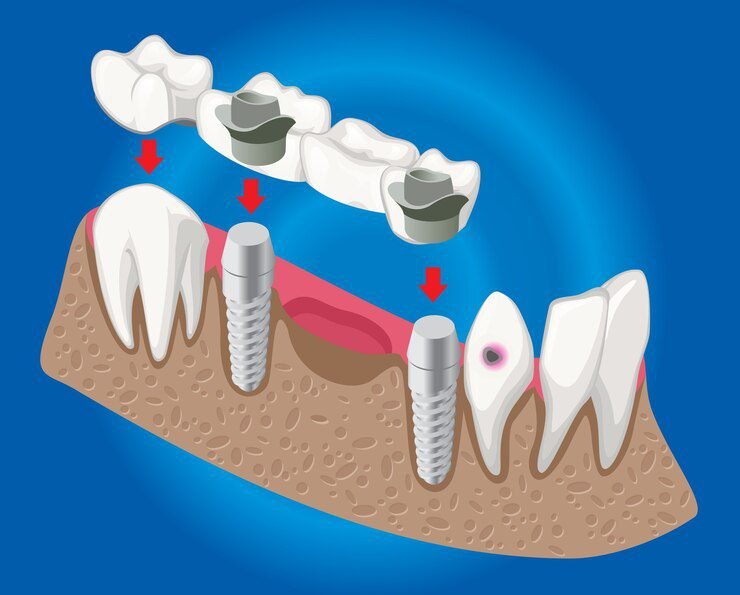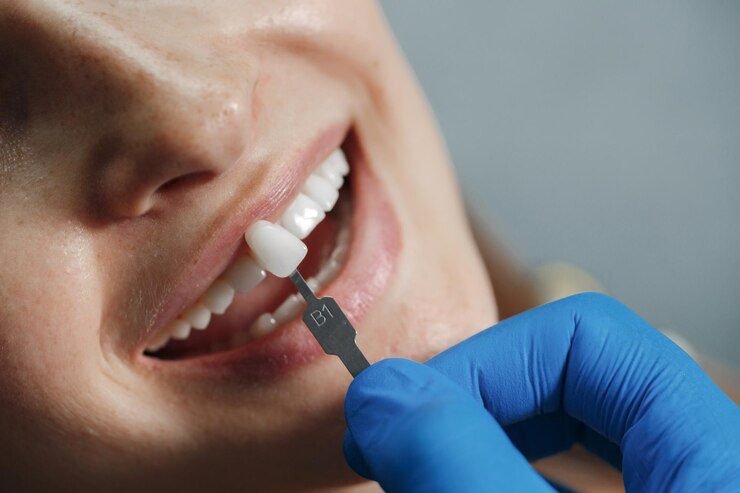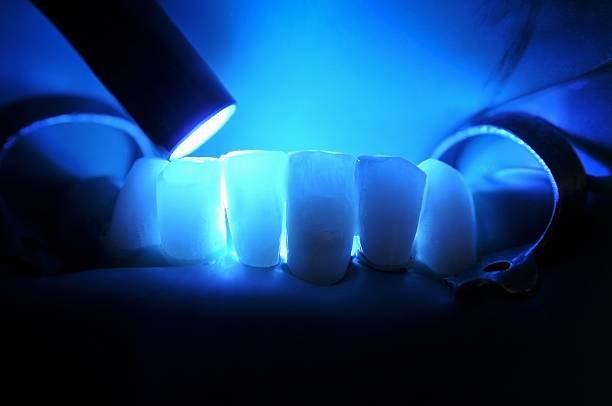Physical Address
304 North Cardinal St.
Dorchester Center, MA 02124
Physical Address
304 North Cardinal St.
Dorchester Center, MA 02124

Discover the pros and cons of tooth-colored composite fillings.

Tooth-colored fillings, also known as composite fillings, offer several advantages over traditional metal amalgam fillings. One significant advantage is their reduced sensitivity to temperature changes, which eliminates the discomfort often associated with metal fillings. This is particularly beneficial for individuals who experience sensitivity to hot or cold food and beverages.
The composition of tooth-colored fillings, which typically consists of a mixture of resin and glass particles, provides thermal insulation for the tooth. This insulation acts as a buffer, minimizing the transmission of temperature changes to the tooth’s nerve endings. As a result, individuals with composite fillings are less likely to experience sudden sharp pains or discomfort when consuming hot or cold substances.
By reducing sensitivity to temperature changes, tooth-colored fillings improve the overall comfort of individuals who have undergone dental procedures. Whether it’s consuming a piping hot cup of coffee or enjoying an ice-cold dessert, those with composite fillings can do so without the fear of experiencing tooth sensitivity. This advantage contributes to an enhanced quality of life and allows individuals to enjoy their favorite foods and beverages without hesitation.

Composite fillings offer a significant advantage when it comes to convenience. Unlike traditional metal amalgam fillings, which often require multiple visits to the dentist, the application of composite fillings typically involves just one appointment. This time-saving aspect can be a boon for individuals with busy schedules, allowing them to avoid the hassle of multiple dental visits and minimizing any disruption to their daily routines.
In addition to the convenience factor, the efficiency of composite fillings is also worth noting. The process of placing composite fillings is generally quicker compared to other alternatives. This means less time spent in the dental chair, allowing patients to get back to their regular activities sooner. With composite fillings, you can trust that the procedure will be swift and efficient, saving you valuable time and providing a seamless dental experience.

Composite fillings are becoming increasingly popular due to their biocompatible nature, which minimizes the risk of allergic reactions commonly associated with metal fillings. These fillings are made of materials that are well-tolerated by the body, reducing the chances of adverse reactions. This is particularly beneficial for individuals who have a known sensitivity or allergy to metal, ensuring a more comfortable and safe dental experience.
Research has shown that composite fillings have a significantly lower risk of causing allergic reactions compared to traditional metal amalgam fillings. A study published in the Journal of Dentistry found that the incidence of allergic reactions with composite fillings was extremely rare, with less than 1% of patients experiencing any adverse effects. This highlights the biocompatibility and safety of composite materials, making them an excellent choice for individuals concerned about allergic reactions.
In addition to their reduced risk of allergic reactions, composite fillings offer other advantages, such as their aesthetic appeal and durability. These tooth-colored fillings blend seamlessly with the natural teeth, providing a more natural-looking smile. They also have a longer lifespan compared to metal fillings, as they are less likely to wear down or crack over time. With their biocompatible nature and durable composition, composite fillings are a reliable and safe option for patients seeking optimal oral health.
Tooth-colored fillings, while offering many advantages, also come with certain disadvantages. One of the primary drawbacks is the cost associated with these fillings. Compared to traditional metal amalgam fillings, tooth-colored fillings tend to be more expensive. This can be a significant factor for individuals who do not have dental insurance coverage or have limited financial resources.
Another disadvantage of tooth-colored fillings is their durability. While composite fillings are designed to be long-lasting, they may not be as durable as metal fillings, especially in areas of the mouth that experience significant pressure from chewing. Over time, tooth-colored fillings can wear down or become chipped, requiring replacements or further dental work.
It is essential for individuals to weigh the pros and cons of tooth-colored fillings and consider their personal circumstances before making a decision. Consulting with a dentist who can provide guidance based on individual needs and budget is recommended. Understanding the potential drawbacks can help individuals make an informed decision about the best type of filling material for their oral health needs.
Here’s a table summarizing the disadvantages of tooth-colored fillings:
| Disadvantages of Tooth-Colored Fillings | Description | Credible Source |
|---|---|---|
| Costly compared to traditional amalgam fillings | Tooth-colored fillings, such as composite resin or porcelain, tend to be more expensive than traditional amalgam fillings. The materials used in tooth-colored fillings are often pricier, and the procedure may require more time and skill, resulting in higher treatment costs. | American Dental Association (ADA): Link |
| Susceptible to staining and discoloration | Tooth-colored fillings may stain or discolor over time, especially with frequent consumption of staining foods or beverages such as coffee, tea, or red wine. While modern composite materials are more resistant to staining than previous generations, they may still undergo discoloration with prolonged use. | Mayo Clinic: Link |
| Less durable in high-stress areas | Tooth-colored fillings, particularly composite resin fillings, may not be as durable as metal amalgam fillings in high-stress areas of the mouth, such as the molars used for chewing. Composite fillings are more prone to wear, chipping, or breaking under intense biting forces, requiring repair or replacement. | National Institutes of Health (NIH): Link |
| Requires meticulous technique for placement | The placement of tooth-colored fillings, especially composite resin fillings, requires meticulous technique and moisture control for optimal adhesion and longevity. Improper placement or inadequate isolation may lead to premature failure, recurrent decay, or other complications requiring additional treatment. | American Academy of Cosmetic Dentistry (AACD): Link |
| Potential for post-operative sensitivity | Some individuals may experience temporary post-operative sensitivity after receiving tooth-colored fillings. Sensitivity may occur due to factors such as bonding agents, thermal conductivity of materials, or proximity to the tooth’s pulp. Sensitivity typically resolves on its own but may require intervention in severe cases. | Mayo Clinic: Link |
Tooth-colored fillings, also known as composite fillings, offer numerous advantages compared to traditional metal amalgam fillings. However, one potential drawback is cost. Composite fillings tend to be more expensive than metal fillings due to factors such as the advanced materials used and the additional time required for their application.
The cost of composite fillings can vary depending on factors such as the size and location of the cavity, the complexity of the procedure, and the geographic location. On average, composite fillings can cost between $150 to $400 per tooth, whereas metal fillings generally range from $75 to $200 per tooth. It is important to note that these are rough estimates and actual costs may differ.
Despite the higher cost, many patients choose tooth-colored fillings for their aesthetic benefits and improved oral health outcomes. It is essential to consult with your dentist to assess the best option for your dental needs and budget. They can provide a detailed cost breakdown and help you make an informed decision regarding the most suitable filling material for your specific circumstances.
Yes, tooth-colored fillings are generally more expensive than metal amalgam fillings.
Tooth-colored fillings are made of a composite material that is less sensitive to temperature changes, which helps to eliminate discomfort often associated with metal amalgam fillings.
The application of composite fillings typically requires only one visit to the dentist, which saves time and reduces scheduling hassles.
Tooth-colored fillings are made of biocompatible materials, minimizing the risk of allergic reactions that are commonly associated with metal fillings.
Yes, one disadvantage of tooth-colored fillings is their higher cost compared to metal amalgam fillings.